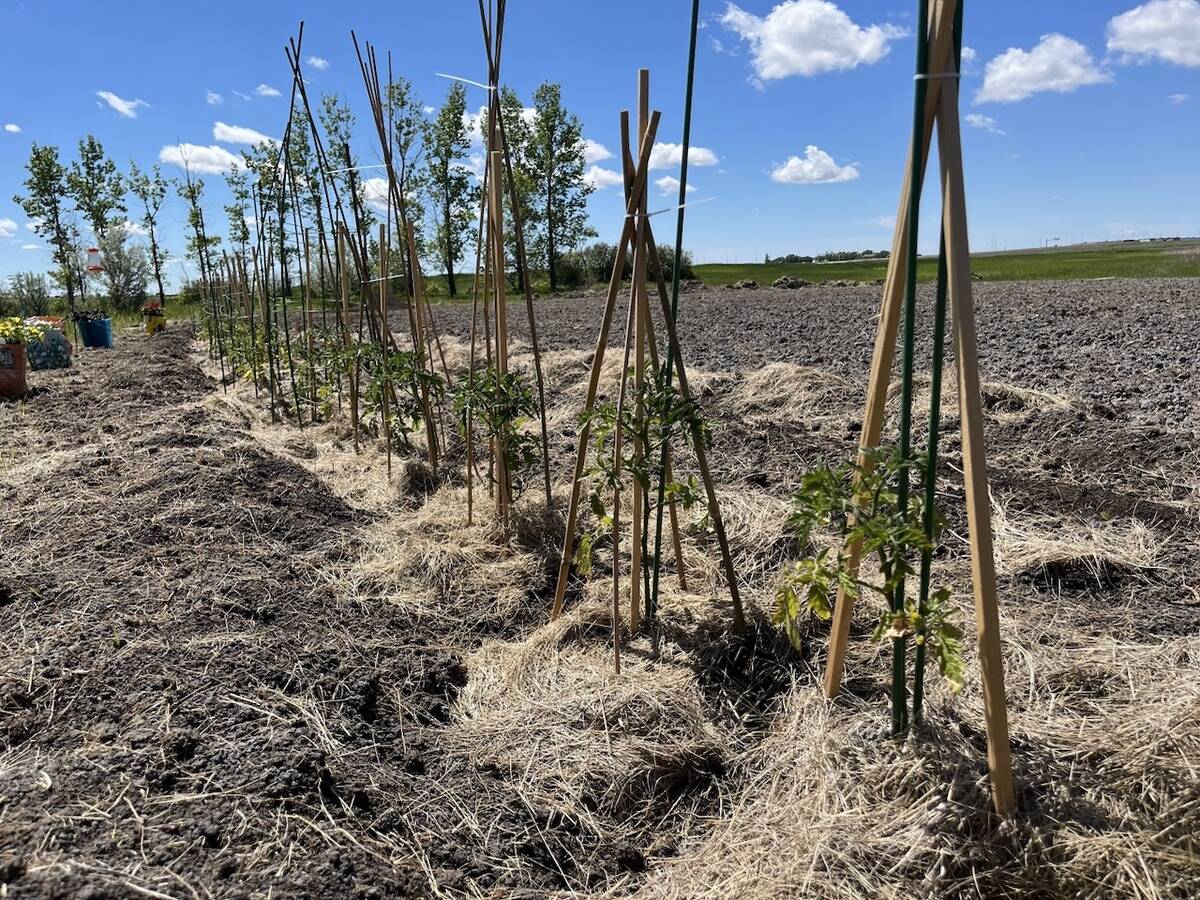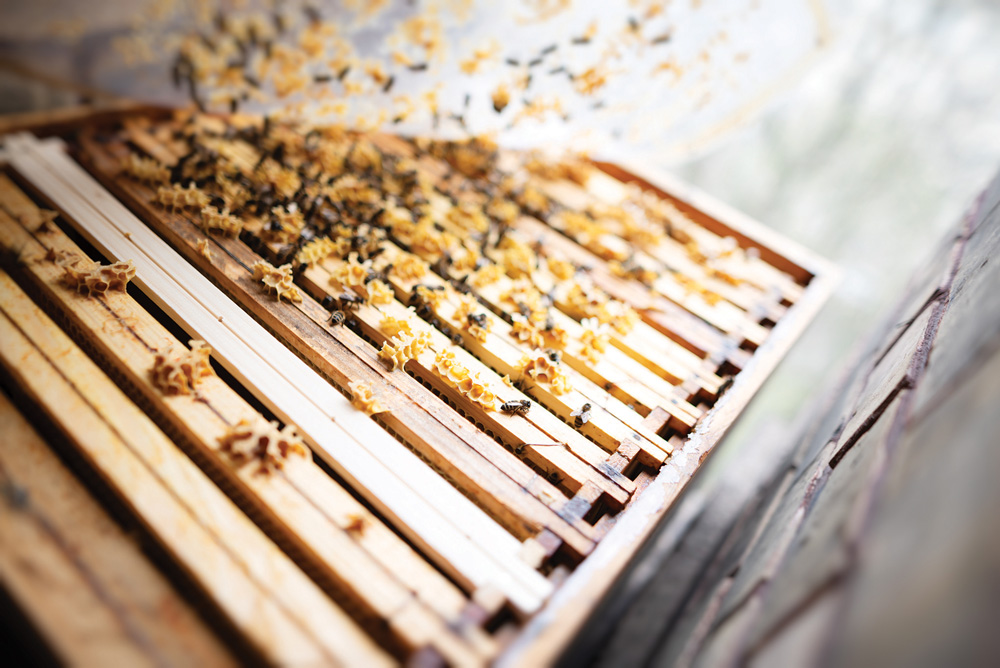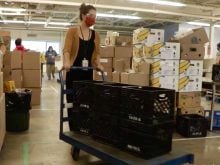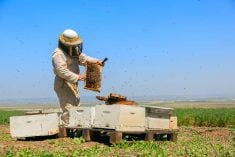Manitoba’s beekeepers will be revisiting their decision to not push for a return of bulk bee shipments from the U.S.
Ian Steppler, chair of the Manitoba Beekeepers’ Association, said they will be holding a special meeting on the topic April 23.
“All producers in Manitoba are divided on this issue,” he said.
Read Also

Seeding Indigenous agricultural prosperity
National Circle for Indigenous Agriculture and Food says Indigenous agricultural success needs strong relationships.
Why it matters: Manitoba’s honey harvest may be in question if beekeepers can’t repopulate their hives, but replacement bees have been thin on the ground.
Earlier this year, the association voted not to endorse lobby efforts for a reopened border, a border closed to American bulk bee shipments since the ’80s, citing pest concerns.
The issue was brought up at the MBA general meeting in an attempt to get ahead of the conversation becoming widespread in Canada’s honey sector.
Beekeepers in provinces like Alberta — which has faced several years of significant winter losses, as well as issues getting replacement stock from approved markets like Australia, New Zealand and Chile — have pushed the Canadian Honey Council to lobby for a new risk assessment on U.S. bees.
The last assessment, they argue, was completed by the Canadian Food Inspection Agency (CFIA) in 2013, while bees from places like California might go a long way to filling the gap in their hives.
A majority of Manitoba beekeepers, however, worried that the pest threats laid out in that 2013 assessment remained very real — this after a year where many were fighting higher levels of the parasitic varroa mite.
Since then however, it looks like Manitoba’s beekeeping sector might be facing serious winter losses of its own, and another year of difficulties when it comes to replacing them.
Beekeepers have reported 30 to 50 per cent losses this spring, and some as high as 70 to 90 per cent, Steppler said. Others are seeing more normal levels, although Steppler noted that there are more than enough high loss reports to spark concern.
The province considers 15 to 25 per cent a normal range for winter bee mortality.
The concern with pests is “viable,” Steppler said, “but at the same time, right now we’re seeing producers who have substantial losses within their hives and they’re waiting in line for replacement packages from traditionally sourced places and there’s just not enough options.”
Tight market
There is, once again, nationwide concern that replacement bee supply will fall short, Steppler said.
Packaged bee shipments plummeted in 2020 with the start of the COVID-19 pandemic. Travel lockdowns shut down flights to approved source countries. Similar issues were flagged last year, with many promised shipments of packaged bees not expected to arrive.
Steppler said bulk bee shipments will face similar logistical challenges this year. Expected shipment volumes have increased in the last three weeks, he noted, although likely not enough to match Canadian needs.
Alberta is once again looking at heavy losses, he said, while assessment in Saskatchewan is ongoing and losses have also been reported out of Ontario and Quebec. In 2020, Alberta reported 20,000 hives lost and 30 per cent less honey harvest.
“There’s pretty heavy concern right across the country and, with that much pressure right across Canada to access replacement stock, it leaves Manitoba to fight to capture the number of packages we need to replace these bees,” Steppler said.
Also, beekeepers may not see the usual local bees for sale, provincial apiarist Rhéal Lafrenière said. While a tight international supply opened the door for local sellers, many of those producers may well be suffering their own losses, and need that extra stock for their own operations. What is available will likely be sucked up quickly.
The issue could put Manitoba’s honey harvest at risk, if adequate replacements aren’t found.
Producers can make up losses by splitting remaining hives, Lafrenière acknowledged. The trade-off, however, is a reduction in honey-producing capacity as divided hives work to recover strength.
“You take resources out of one colony to start a new colony, but the more colonies you have to replace, the more resources you have to take from your surviving colonies, and there’s a line where taking too much. You will be able to get your numbers back, but you are sacrificing honey production,” he said.
That will be a bitter pill for producers, given the price of honey, Steppler said.
The honey sector has enjoyed a sharp rise in prices since the start of the pandemic. In May 2021, the MBA reported prices between $2.25 to $2.35 a pound and as high as $2.85 a pound, close to double reported prices the prior year.
Steppler said he has recently heard prices up to $3 a pound or over.
“This is these guys’ livelihoods. This is what they do. And it’s hard to just take a year off and rebuild your losses when this is what supports your livelihood,” he said. “It’s getting pretty passionate in the beekeeping industry right now.”
Still counting
Survival assessments are still in early days and snow is still restricting access to hives, Lafrenière said. He expects, however, that mortality will, in fact, blow past normal loss ranges.
“There’s enough information and general sharing of concern about the losses and enough individual beekeepers reporting very high losses that there’s probably no doubt that we’re going to be significantly above our provincial average,” he said.
A conservative estimate puts losses around 30 to 40 per cent, he said, although he stressed that unknown variables make it difficult to pin down a number.
“At 40 per cent, we’re double our normal average,” he said. “We don’t often go into the 40 per cents.”
Lafrenière pointed to 2013, when Manitoba also saw 45 per cent hive losses. Like that year, he noted, average losses this year might not reflect reality on most farms, but rather the midpoint between extremes. Some producers likely had a very normal winter, he noted, while others have been ravaged.
It took several years for the honey sector to recover from the 2013 hit, he also said.
Colony numbers dropped from 80,000 to 73,800 following that year. By 2021, Statistics Canada reported that colony numbers had clawed back up to 115,707.
“It’s probably going to take up to two to three years to really get back to the numbers that we went into winter with,” Lafrenière said.
David Koroscil, manager of claim services with the Manitoba Agricultural Services Corporation (MASC), said they are also anticipating higher claims, despite the number of hives that remain unassessed.
MASC recorded 39 producers in their overwinter bee mortality insurance program coming into 2022.
Producers will also have to dig (or re-dig) out their hives following blizzard conditions that blanketed agricultural Manitoba in the second week of April.
The storm likely did not significantly impact winter survival, Lafrenière said, but it will certainly delay remaining survival assessments.
















